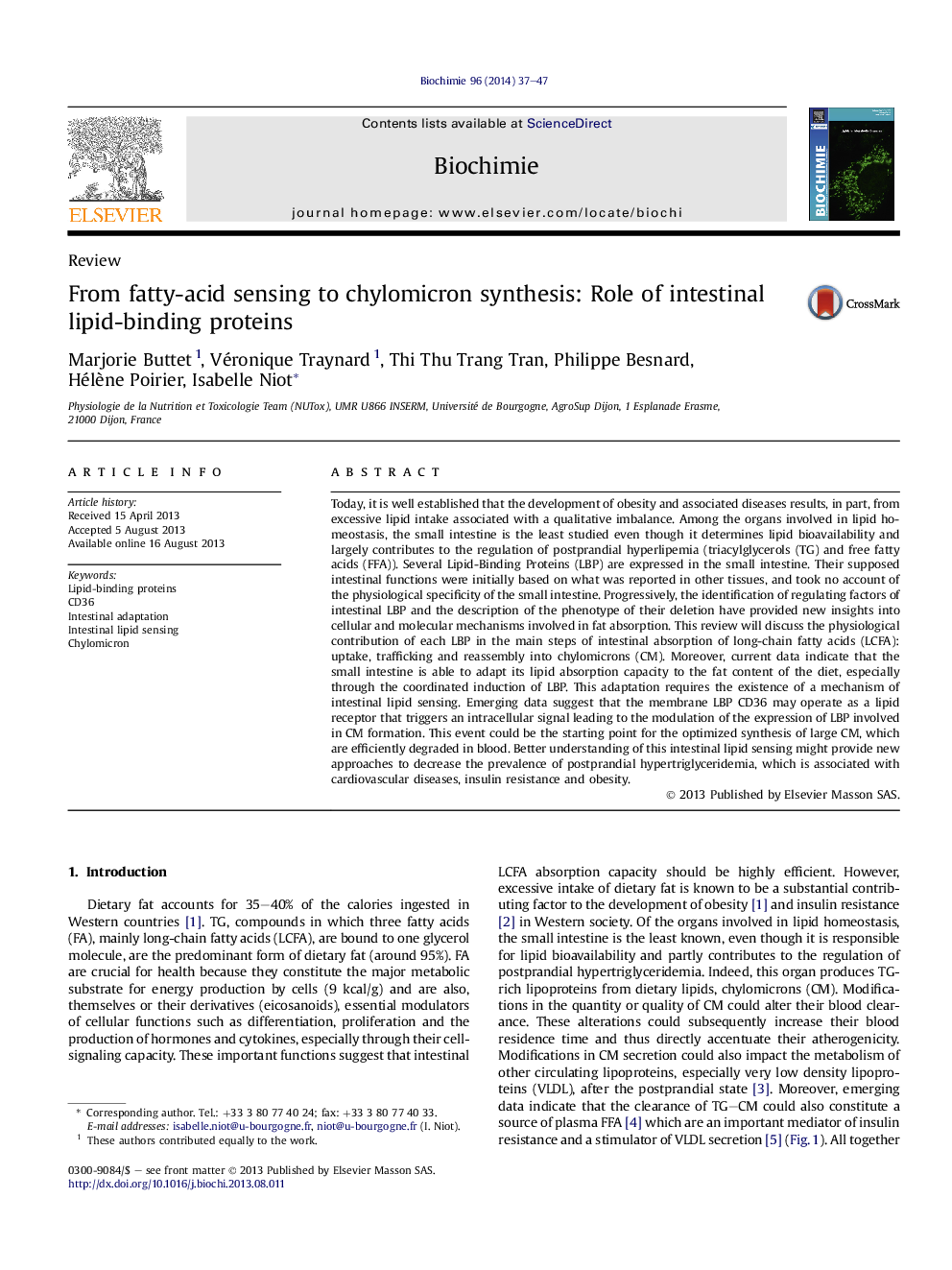| کد مقاله | کد نشریه | سال انتشار | مقاله انگلیسی | نسخه تمام متن |
|---|---|---|---|---|
| 8305930 | 1538434 | 2014 | 11 صفحه PDF | دانلود رایگان |
عنوان انگلیسی مقاله ISI
From fatty-acid sensing to chylomicron synthesis: Role of intestinal lipid-binding proteins
ترجمه فارسی عنوان
از حساسیت چربی به سنتز چیلومیکرون: نقش پروتئین های چسبندگی روده
دانلود مقاله + سفارش ترجمه
دانلود مقاله ISI انگلیسی
رایگان برای ایرانیان
کلمات کلیدی
موضوعات مرتبط
علوم زیستی و بیوفناوری
بیوشیمی، ژنتیک و زیست شناسی مولکولی
زیست شیمی
چکیده انگلیسی
Today, it is well established that the development of obesity and associated diseases results, in part, from excessive lipid intake associated with a qualitative imbalance. Among the organs involved in lipid homeostasis, the small intestine is the least studied even though it determines lipid bioavailability and largely contributes to the regulation of postprandial hyperlipemia (triacylglycerols (TG) and free fatty acids (FFA)). Several Lipid-Binding Proteins (LBP) are expressed in the small intestine. Their supposed intestinal functions were initially based on what was reported in other tissues, and took no account of the physiological specificity of the small intestine. Progressively, the identification of regulating factors of intestinal LBP and the description of the phenotype of their deletion have provided new insights into cellular and molecular mechanisms involved in fat absorption. This review will discuss the physiological contribution of each LBP in the main steps of intestinal absorption of long-chain fatty acids (LCFA): uptake, trafficking and reassembly into chylomicrons (CM). Moreover, current data indicate that the small intestine is able to adapt its lipid absorption capacity to the fat content of the diet, especially through the coordinated induction of LBP. This adaptation requires the existence of a mechanism of intestinal lipid sensing. Emerging data suggest that the membrane LBP CD36 may operate as a lipid receptor that triggers an intracellular signal leading to the modulation of the expression of LBP involved in CM formation. This event could be the starting point for the optimized synthesis of large CM, which are efficiently degraded in blood. Better understanding of this intestinal lipid sensing might provide new approaches to decrease the prevalence of postprandial hypertriglyceridemia, which is associated with cardiovascular diseases, insulin resistance and obesity.
ناشر
Database: Elsevier - ScienceDirect (ساینس دایرکت)
Journal: Biochimie - Volume 96, January 2014, Pages 37-47
Journal: Biochimie - Volume 96, January 2014, Pages 37-47
نویسندگان
Marjorie Buttet, Véronique Traynard, Thi Thu Trang Tran, Philippe Besnard, Hélène Poirier, Isabelle Niot,
